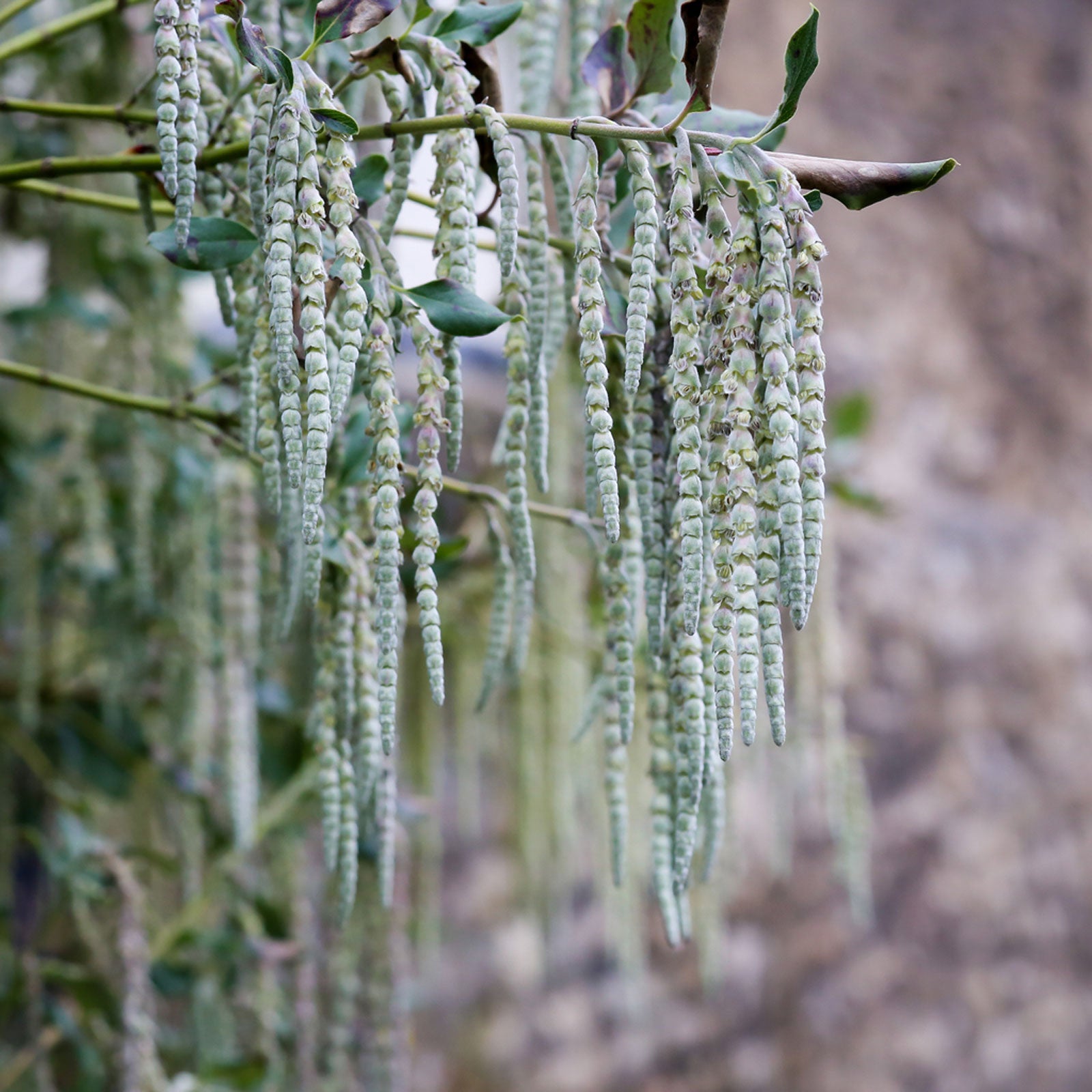Silk Tassel Bush Care: Learn About Growing Silk Tassel Plants


Silk tassel plants (Garrya elliptica) are dense, erect, evergreen shrubs with long, leathery leaves that are green on top and woolly white underneath. The shrubs typically bloom in January and February, followed by grape-like clusters of round berries that provide much welcome sustenance for birds. Read on to learn about growing silk tassel shrubs.
About Silk Tassel Shrubs
Native to the Pacific Coast, silk tassel is also known as coast tassel bush, coast silk tassel, or wavy leaf silk tassel. 'James Roof' is a popular variety grown in gardens. Easy-to-grow silk tassel reaches mature heights of 20 to 30 feet (6-9 m.). In its natural environment, silk tassel can grow for as long as 150 years.
Silk tassel shrubs are dioecious, which means the plants produce male and female, catkin-like flowers (silk tassels) on separate plants. Male blooms are long and creamy yellow, eventually turning gray as they dry. Female blooms are similar but shorter.
Silk Tassel Bush Planting
Silk tassel shrubs grow in USDA plant hardiness zones 8 through 10. They prefer areas without extremely hot summers and appreciate a little shade during the afternoon. However, they grow in full sun in cooler climates.
Silk tassel may not survive soggy winters with a lot of heavy rains, although planting on mounds may help. Although silk tassel shrubs are adaptable to nearly any soil type, well-drained soil is critical for this drought-tolerant shrub. Silk tassel is a good choice for dry, shady areas.
Silk tassel care includes watering newly planted shrubs deeply once every week or two. A monthly watering is enough for established plants.
When to prune silk tassel is another aspect of its care. Although silk tassel shrubs rarely need pruning, early spring is the best time. Give the plant a light trim after flowering when the silk tassel flowers begin to look ragged, but before new growth emerges in spring.
Gardening tips, videos, info and more delivered right to your inbox!
Sign up for the Gardening Know How newsletter today and receive a free copy of our e-book "How to Grow Delicious Tomatoes".

A Credentialed Garden Writer, Mary H. Dyer was with Gardening Know How in the very beginning, publishing articles as early as 2007.
-
 Moody Blooms For Spring: 8 Types Of Black Flowers To Add Drama To Spring Displays
Moody Blooms For Spring: 8 Types Of Black Flowers To Add Drama To Spring DisplaysFrom midnight burgundies to inky violets, several types of black flowers can enrich and embolden a spring display. Try these brooding bloomers for a moody garden
By Tonya Barnett
-
 My Homemade Orchid Fertilizer Always Brings More Blooms – Here's The Easy Recipe That Transforms Plants
My Homemade Orchid Fertilizer Always Brings More Blooms – Here's The Easy Recipe That Transforms PlantsScientist-turned-gardener Mary Ellen Ellis shares her tried-and-tested DIY orchid fertilizer recipe, plus more ingredients to try for healthy, happy plants.
By Mary Ellen Ellis